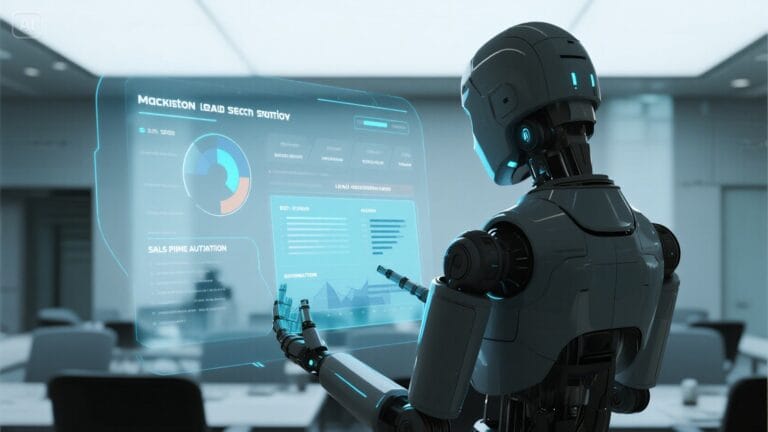AI SDR vs Traditional SDR: Which Is Better for UK Businesses?
Sales development is evolving rapidly. In the UK, businesses are increasingly debating whether to stick with traditional Sales Development Representatives (SDRs) or embrace AI SDR agents UK. With economic shifts, changing buyer behaviours, and increasing pressure on sales efficiency, it’s time to explore which route delivers better results in 2025.
In this guide, we’ll break down the differences, advantages, challenges, and best-fit scenarios for both AI SDRs and traditional SDRs. By the end, you’ll be equipped to make the right choice for your sales strategy.
What Is a Traditional SDR?
A traditional SDR is a human sales development representative responsible for:
- Prospecting potential leads
- Initiating conversations via cold calls and emails
- Qualifying leads before passing them to account executives
They play a crucial role in nurturing relationships, reading emotional cues, and adapting communication styles on the fly. However, they also face limitations in scale, consistency, and working hours.

What Is an AI SDR Agent?
An AI SDR agent is an automated, AI-driven system that replicates many tasks of a human SDR. Powered by large language models (LLMs), these tools:
- Engage prospects in human-like email or chat conversations
- Qualify leads based on predefined criteria
- Integrate with CRM systems for streamlined handovers
AI SDRs are always available, scalable, and consistent—making them an attractive option for growing UK sales teams.
Learn how AI agents work in UK sales teams
Key Differences Between AI SDRs and Traditional SDRs
| Feature | Traditional SDR | AI SDR Agent |
|---|---|---|
| Human Touch | Yes | Limited (simulated empathy) |
| Availability | Office hours | 24/7 |
| Scalability | Difficult without hiring | Instantly scalable |
| Personalisation | High (manual) | High (automated with context) |
| Cost | High (salary, training, tools) | Lower over time |
| Response Speed | Slower | Instant |
| CRM Integration | Manual or semi-automated | Fully automated |
Advantages of AI SDRs for UK Businesses
AI SDRs can be a game-changer for modern UK sales teams, especially those scaling fast or dealing with large lead volumes.
1. Always-On Lead Engagement
AI SDRs can instantly respond to inbound enquiries and initiate outreach, regardless of time zone.
2. Data-Driven Consistency
AI tools don’t forget to follow up. Every lead is treated equally with consistent messaging.
3. Lower Operational Costs
Once set up, AI SDRs are more cost-effective than maintaining a large sales team.
4. Easy CRM Syncing
Modern AI SDRs integrate seamlessly with HubSpot, Salesforce, and other CRM tools.
Where Traditional SDRs Still Shine
While AI SDRs are powerful, human SDRs remain vital in many scenarios:
- Complex Sales Cycles: High-value B2B deals still require human touchpoints.
- Relationship Building: Humans excel in emotional intelligence and rapport.
- Strategic Prospecting: Experienced SDRs can pivot and adjust strategy in real time.
Which Should UK Businesses Choose in 2025?
It depends on your goals:
- Choose AI SDRs if you’re scaling, need 24/7 responsiveness, or have high lead volumes.
- Stick with Traditional SDRs if your sales cycle is complex, or relationships are key.
- Hybrid Approach: Many UK businesses are combining AI and human SDRs for best results.
Tip: Start with AI SDRs for top-of-funnel outreach and use humans for deeper engagement.
Integrating AI SDRs Into Your UK Sales Team
Thinking of getting started with AI SDRs? Here’s a simple plan:
Step 1: Choose the Right AI SDR Platform
Look for tools like Regie.ai, Drift, or Apollo.io that offer UK-based support and GDPR compliance.
Step 2: Map Your Buyer Journey
Understand which parts of your funnel can be automated safely.
Step 3: Pilot with a Small Segment
Start with one campaign or region to measure performance.
Step 4: Train Your Team
Ensure your sales team understands how to work alongside AI agents.
Step 5: Monitor, Optimise, Scale
Use analytics to track performance, fine-tune scripts, and scale when ready.
(FAQs)
Final Thoughts
AI SDRs are not here to replace traditional SDRs entirely—at least not yet. Instead, they offer UK businesses a way to modernise, reduce costs, and improve lead engagement.
By adopting a smart, hybrid sales strategy, your business can stay competitive, agile, and ready to meet 2025’s evolving demands.








